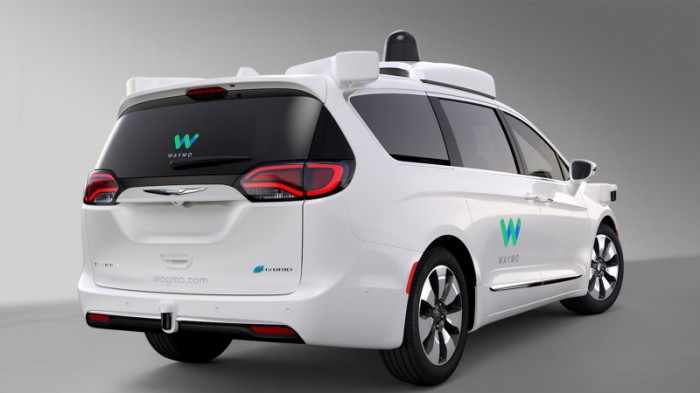Tech Firms Invite Automakers to Take a Back Seat on Self-Driving Cars
What's the best way to get a piece of the emerging field of self-driving cars? Automakers say it's to custom-make their own robotic vehicles, essentially from scratch. A handful of tech firms, however, are building systems that will allow carmakers to take a back seat.
At the North American International Auto Show in Detroit, for instance, Alphabet’s self-driving-car company, Waymo, announced that it has built its own sensor package for autonomous vehicles. The kit, built in-house and fitted to the company’s new Chrysler Pacifica minivans due to take to the road this month, includes “360-degree-view radar, eight vision modules and three different types of Waymo-built lidars,” according to the Wall Street Journal.
Speaking at the event, Waymo’s CEO, John Krafcik, cited cost savings as a motivation for the move to build hardware in-house. Compared to 2009, he argued, when a lidar sensor cost $75,000, the company has shaved 90 percent from the price. But as the Verge points out, established lidar manufacturer Velodyne already sells a sensor for $8,000.

In reality, then, it’s the ability to make its own custom hardware that’s the real attraction. Indeed, the company says that it has designed two different lidar sensors specially tuned for vision at different distances. The short-range version would be useful for focusing on objects like pedestrians, while the long-range lidar could focus on far-off threats, like cars at a rotary up the road.
That kind of customization may also be where commercial value lies. The company recently stated that it didn’t plan to build its own cars, and would instead partner with automakers. Now it seems that supplying hardware may be part of that deal.
It joins other technology companies that are taking a similar tack. Israeli company Mobileye, for instance, is partnering with numerous car manufacturers in a similar way, and its latest project, with BMW, is particularly interesting because it will, to a large extent, teach itself how to drive. University of Oxford spin-out Oxbotica, meanwhile, has developed a new software system that can make any vehicle driverless.
The benefit for automakers is clear: instead of building a dedicated technology and artificial intelligence team to make an autonomous car, the likes of Waymo, Mobileye, and Oxbotica could simply provide them with an off-the-shelf package to install in their vehicles. Meanwhile, the likes of Tesla, General Motors, and Ford all look set to continue building their own autonomy systems from the ground up.
(Read more: The Wall Street Journal, The Verge, "Alphabet Sets Up a New Company to Commercialize Autonomous Car Technology," "Plug-and-Play Autonomy Could Soon Turn Your Car Into a Self-Driving Robot," "The Latest Driverless Cars Don’t Need a Programmer, Either")
Keep Reading
Most Popular
How scientists traced a mysterious covid case back to six toilets
When wastewater surveillance turns into a hunt for a single infected individual, the ethics get tricky.
The problem with plug-in hybrids? Their drivers.
Plug-in hybrids are often sold as a transition to EVs, but new data from Europe shows we’re still underestimating the emissions they produce.
What’s next for generative video
OpenAI's Sora has raised the bar for AI moviemaking. Here are four things to bear in mind as we wrap our heads around what's coming.
Stay connected
Get the latest updates from
MIT Technology Review
Discover special offers, top stories, upcoming events, and more.